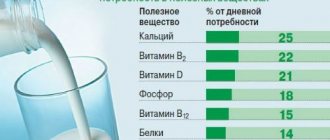The Benedictine monks gave the world a lot, including the creation of a recipe for Parmesan cheese. It is believed that their goal was to invent cheese that could be stored for as long as possible. It is thanks to this quality that it has gained popularity all over the world. True Parmesan is now a cheese made in Italy, which has a brittle structure and is produced only in certain provinces.
Parmesan production technology
Parmesan is an Italian hard cheese characterized by long ripening. Its original name is Parmigiano-Reggiano. The first written mention of it dates back to 1254 in Genoa. Cheese production is carried out annually, from early April to mid-November. The main ingredient is milk from cows grazing on the pastures of the production area.
First, the vats are heated, and then renin is added to them. Under the influence of high temperature, a curd clot is formed from it. It is divided into small particles by sharp movements.
After special treatment, the curd is placed on hemp cloth, after which it is dipped in whey. After transferring into wooden molds, excess whey is removed from the resulting curd. The next step is to distribute the cheese mixture into molds. After 4 days of aging, they are lowered into a barrel with saline solution. This is necessary for canning the product. Throughout the year, the cheese matures in a special room. Every 10 days it must be turned over and wiped with a cloth. The maturity of the cheese is determined by tapping it with a silver hammer. On the finished product you can find a mark indicating the place of its manufacture:
- Padua;
- Parma;
- Reggio Emilia;
- Bologna;
- Modena.
There should be no holes in Parmesan cheese, which are typical for cheese.
Before entering the shelves, the cheese undergoes quality control. A special commission evaluates its texture, taste, size and smell. Only after this the corresponding stamp is placed on the head of cheese.
Comment! A head of Parmesan is 70% nutrient-rich and 30% water.
Recommended reading: Benefits of goat cheese
History of Parmigiano Reggiano
The cheese recipe was developed about 900 years ago on the territory of the Cistercian and Benedictine monasteries. Over all these years, the composition of Parmesan has not changed: milk, water, salt and the lion's share of patience during ripening.
The monasteries were located on the plain between Parma and Reggio Emilia. From these provinces the cheese got its name Parmigiano Reggiano. A large number of pastures contributed to the development of farming in monasteries and the emergence of an excess of milk, which required a search for a recipe for an ideal dairy product capable of long-term storage.
The first written mention of cheese is a notarial deed drawn up in Genoa in 1254, according to which a wealthy woman mortgaged her house for an annual supply of 25 kg of cheese produced in Parma. It was then known as caseus parmensis (Latin name).
During the 14th century, the Cistercians of the Benedictine Abbey maintained a monopoly on the production of Parmesan and sold it throughout Italy.
In the 16th century, the recipe for Parmesan cheese was sold to Europe, where the best chefs in Germany and France began to prepare it. On August 7, 1612, the Duke of Parma, to protect the original production, compiled a list of places where they could use the word “Parma” in the name of their product.
The name "Parmesan" appeared in French, which meant "from Parma".
By 2004, there were about 512 producers of cheese with the name "Parmesan" in the world. But in 2008, the European Court decided to call only cheese made in the northern regions of Italy “Parmesan”.
Historical facts and literary episodes
- In 1344, Giovanni Boccaccio, in his book The Decameron, mentions the use of “grated Parmesan for pasta and ravioli.”
- The great playwright Moliere, in an effort to prolong his life, adhered to an unusual diet: 320 g of Parmesan and 3 glasses of port per day.
- Dr. Livesey (the hero of Robert Louis Stevenson's book "Treasure Island") said: “You saw my snuff-box, didn't you? But you've never seen me take snuff, because I always put a piece of Parmesan cheese in my snuff box. It is very nutritious!”
- There is a version that the third US President, Thomas Jefferson, contributed to the popularization of Parmesan in America.
Chemical composition of Parmesan cheese
Parmesan is considered one of the most satisfying and healthy types of cheese. This is due to its rich composition. It contains 9 amino acids necessary for the body. In addition, the product is considered a rich source of proteins. 30 g contains 1/5 of its daily requirement. The chemical composition of Parmesan cheese includes the following components:
- pantothenic acid;
- vitamins B12, D3, PP and A;
- amino acids;
- biotin;
- micro- and macroelements (sodium, zinc, iron, manganese, selenium, phosphorus, potassium, copper and calcium);
- fatty acid.
The main feature of the cheese is its rich calcium content. Even when consumed in small quantities, it is able to replenish the daily requirement for the substance. Due to the fatty acids in its composition, parmesan strengthens blood vessels and starts metabolic processes. The abundance of vitamins stabilizes the emotional state and improves immunity.
Health Benefits of Parmesan Cheese
Experts often recommend introducing parmesan into the diet of people with anemia, diabetes, tuberculosis and cancer. The product is easily absorbed by the body and does not add extra pounds. Among the most pronounced properties of cheese are:
- stimulation of peristalsis;
- antibacterial effect;
- normalization of metabolic processes;
- nutrition of brain cells;
- restoration of the nervous system;
- stopping the development of pathogenic microorganisms;
- maintaining visual functions;
- strengthening the cardiovascular system and musculoskeletal system;
- restoration of intestinal flora;
- help in losing weight.
The presence of this type of cheese in the diet ensures that energy reserves are maintained at the required level. Due to its high nutritional value, even a small portion of cheese relieves hunger for a long time. A large number of amino acids in the composition have a positive effect on metabolic processes. At the same time, the substances contained in cheese regulate the functioning of the digestive system.
What are the benefits of Parmesan for women?
Among the beneficial properties of Parmesan for women are stress relief. This is especially true during the premenstrual period and during menopause. Nutritionists recommend using Parmesan as a snack for women trying to lose weight. Due to its high nutritional value, it relieves hunger for a long time, but does not lead to weight gain. The product also has a positive effect on the condition of hair, nails and skin.
Attention! Real Parmesan can be added to the diet of people with lactose intolerance.
Parmesan is considered one of the most expensive types of cheese
Parmesan during pregnancy
Parmesan is not a food prohibited during pregnancy. Due to the fact that it is easily digestible, the likelihood of digestive disorders is minimal. In addition, it contains a lot of minerals necessary for the development of a child.
Is Parmesan ok while breastfeeding?
This type of cheese can be introduced into the diet of a nursing woman from the 1st month of birth. It has the ability to increase the fat content of milk. This has a positive effect on the child's health.
Benefits of Parmesan for Men
Parmesan is also recommended to be included in the diet of men. It contains substances that have a positive effect on erection and the quality of seminal fluid. Due to its high protein content, the product increases physical endurance and accelerates the process of building muscle mass. To get the maximum benefit from it, it is enough to eat 50 g per day.
What are the benefits of cheese for children?
Parmesan can be given to children over the age of 3 years. The daily norm is 15 g. Cheese can be consumed in sandwiches or as an addition to omelettes, porridges and salads. It is advisable to pre-grind the product using a grater. Moderate consumption of parmesan in childhood helps maintain calcium levels in the body and regulate digestion.
The benefits of Parmesan cheese for weight loss
The benefits of cheese during weight loss are due to its ability to support metabolism. In addition, the product perfectly eliminates the feeling of hunger and replenishes energy for a long time. It is impossible to eat a large amount of cheese, so it does not contribute to excess weight gain. Due to its protein content, parmesan consumption prevents severe loss of muscle mass during weight loss. To speed up the weight loss process, consume cheese in the first half of the day in the amount of 2-3 slices.
Bottom line
Parmesan is a hard cheese originally produced in the regions of Italy. The product has a dense structure that does not allow it to be cut into even pieces. The aroma and taste of the cheese is amazing in its diversity.
In addition, it has many benefits and has a positive effect on the body. But, despite such an amazing number of positive characteristics, Parmesan has one significant drawback - cost.
In cooking, Parmigiano is used in various recipes: in salads, pizza, along with spaghetti, sauces, served with fresh fruits, vegetables, nuts, etc. Parmesan does not leave any cheese lover indifferent!
How to make Parmesan at home
You can also make Parmesan yourself. It will be slightly different from the purchased version. In order for the product to turn out as desired, you must follow the cooking technique.
Components:
- 8 liters of milk;
- enzyme;
- lipase;
- calcium chloride;
- thermophilic culture.
Cooking process:
- The milk is heated in a water bath to a temperature of 30 °C.
- The remaining components are added to it, after which everything is thoroughly stirred.
- Remove the container from the heat, wrap it in a towel and leave for 45 minutes.
- After the specified time, the enzyme is added to the mixture. After half an hour, the mass should curl up.
- After hardening, the resulting clot is crushed into several small pieces. Then the container is put back on the fire and brought to a temperature of 38 °C. It is important to prevent the pieces of cheese from sticking together.
- The temperature is increased to 52 °C, stirring the cheese in the opposite direction.
- When the clots become more elastic, turn off the fire. They should gradually go down. After this, the whey is drained.
- The resulting mixture is squeezed out using gauze and placed under a press.
- The next day, the head of cheese is pulled out of the mold and dipped in a saline solution for a day.
- The ripening process takes 2 weeks. To do this, the cheese is stored in a room with a humidity of 75% and at a temperature not exceeding 15 °C.
The product can be stored at room temperature for no more than a week
Important! Due to its sufficient calcium content, parmesan can be used to prevent osteoporosis.
Benefits during pregnancy and breastfeeding
Parmesan can be eaten while pregnant, as it goes through a long period of ripening, the harmful bacteria in it die, and the technology for producing real hard cheese does not allow the use of harmful chemical additives and preservatives.
A small piece of the delicacy a day will help a pregnant woman feel a surge of strength and improve her mood, as well as maintain iron levels in the blood at the required level.
After the birth of your baby, do not rush to introduce this cheese into your menu; consult your pediatrician to prevent allergies and colic in your baby.
If there are no contraindications, parmesan will strengthen the immunity of the woman and child, increase the amount of mother's milk and improve the baby's digestion.
Use of Parmesan cheese in cooking
We recommend reading: The benefits of white wine and how to make it at home
Parmesan is especially common in traditional Italian cuisine. It is used to make pasta, salads, pizza and various soups. When baking main courses in the oven, cheese is used to form a golden brown crust. Parmesan is often used as an appetizer for red wine. It goes well with cold cuts, olives, tomatoes and herbs. The most successful gastronomic combinations include Parmesan with arugula, cherry tomatoes, eggplant and walnuts. Italian housewives add cheese crust to soups 5 minutes before readiness. This allows you to give the dish an unusual spicy taste. In addition, it is often used as an addition to lasagna. Before serving, Parmesan is chopped with a special knife. Due to the unusual grain structure, even slices are not obtained. Therefore, the product is not cut, but broken off into pieces.
Recommended reading: Benefits of tomatoes for the body
Description
Parmesan is a type of Italian hard cheese made from cow's milk. It is prepared exclusively from natural ingredients, due to which it has a rich taste and aroma. Italians eat small slices of cheese with red wine. It is added to various salads and vegetable dishes, meat and pizza to impart special flavor properties.
Harm from Parmesan
When consumed in moderation, Parmesan is not harmful to health at all. Regardless, caution should be exercised with the product. It is high in sodium. In older people, the need for the substance is not high. Eating too much parmesan can lead to sodium overload, which can be detrimental to your health. It is also necessary to take into account the contraindications of Parmesan.
Among them are the following:
- enterocolitis;
- hypertension;
- allergy;
- pyelonephritis;
- stomach ulcer;
- excess weight;
- gastritis;
- urolithiasis disease;
- complicated toxicosis.
Allergies to dairy products are rare. To exclude possible allergic reactions, parmesan should be consumed in small quantities. Intolerance is indicated not only by skin rashes, but also by abnormal bowel movements. In rare cases, swelling of the mucous surfaces is observed.
If the cheese begins to deteriorate, the damaged areas are cut off and the rest is heat treated.
Benefits for children
You can add finely grated Parmesan to baby porridge or purees from the first year of your baby’s life. Cheese will provide the growing body with animal protein, potassium and phosphorus will strengthen fragile bones, vitamins will protect against colds and other diseases.
A small piece of Parmesan brings only benefits, but if consumed in excess, this delicacy can be dangerous for the baby due to the large amount of salt and high fat content, which put a large burden on digestion.
Important! Cheese is a dairy product, which means it can cause allergies.
How to choose and store Parmesan cheese correctly
When choosing a product, you should pay attention to the presence of appropriate seals and inscriptions. The abbreviation DOP must be present on the packaging. The stencil marking “PARMIGIANO-REGGIANO” is also important. Next to it, in addition to the production date, there is a unique serial number. If the cheese has minor defects, there will be horizontal lines on the packaging.
It is advisable to avoid vacuum-packed cheese. It is necessary that it is cut from the large head immediately before purchase. It is extremely important to pay attention to how the product is stored on the counter. It is able to absorb foreign odors. Therefore, there should be no other products near it.
By taste you can determine the degree of maturity of the product. The young cheese has a delicate taste with notes of flowers and herbs. Product aged 22 months or more has a slight sweetness and a hint of piquancy. Specimens older than 30 months are spicy and pungent in taste.
In sealed vacuum packaging, cheese can be stored for up to 8 months. The most suitable place for storage would be the refrigerator. After opening, the product must be wrapped in parchment paper and then in foil. In this form, it is able to retain its benefits for six months. In its original packaging, cheese spoils very quickly. It may become moldy or absorb unpleasant odors. In order to dispose of a spoiled product in a timely manner, after replacing the packaging, it is necessary to record the date of opening.
Another way to store cheese involves wrapping it in a wet cloth. The top is covered with foil. In this form, the cheese is placed in a plastic container with a lid. You can also use the freezer for storage. But the temperature should be between - 20 and - 15 °C. Before placing in the freezer, the product is wrapped in parchment paper. It is believed that the best preservation in this way can be ensured only for small pieces of cheese.
Advice! It is not advisable to buy grated Parmesan, as it significantly loses its taste.
Use for weight loss
Parmesan can become part of the diet menu if you follow these recommendations:
- daily consumption of this cheese should be kept to a minimum - eat a small piece as a quick snack or add it to a green salad;
- It is better to use it during lunch, so that you have time to burn extra calories later.
Parmesan will help you be more energetic, relieve hunger, it replenishes the deficiency of substances necessary for the body and allows you to quickly increase muscle mass.
The best combination for this cheese as part of a diet:
- fruits;
- fresh salads;
- pasta made from durum wheat.











